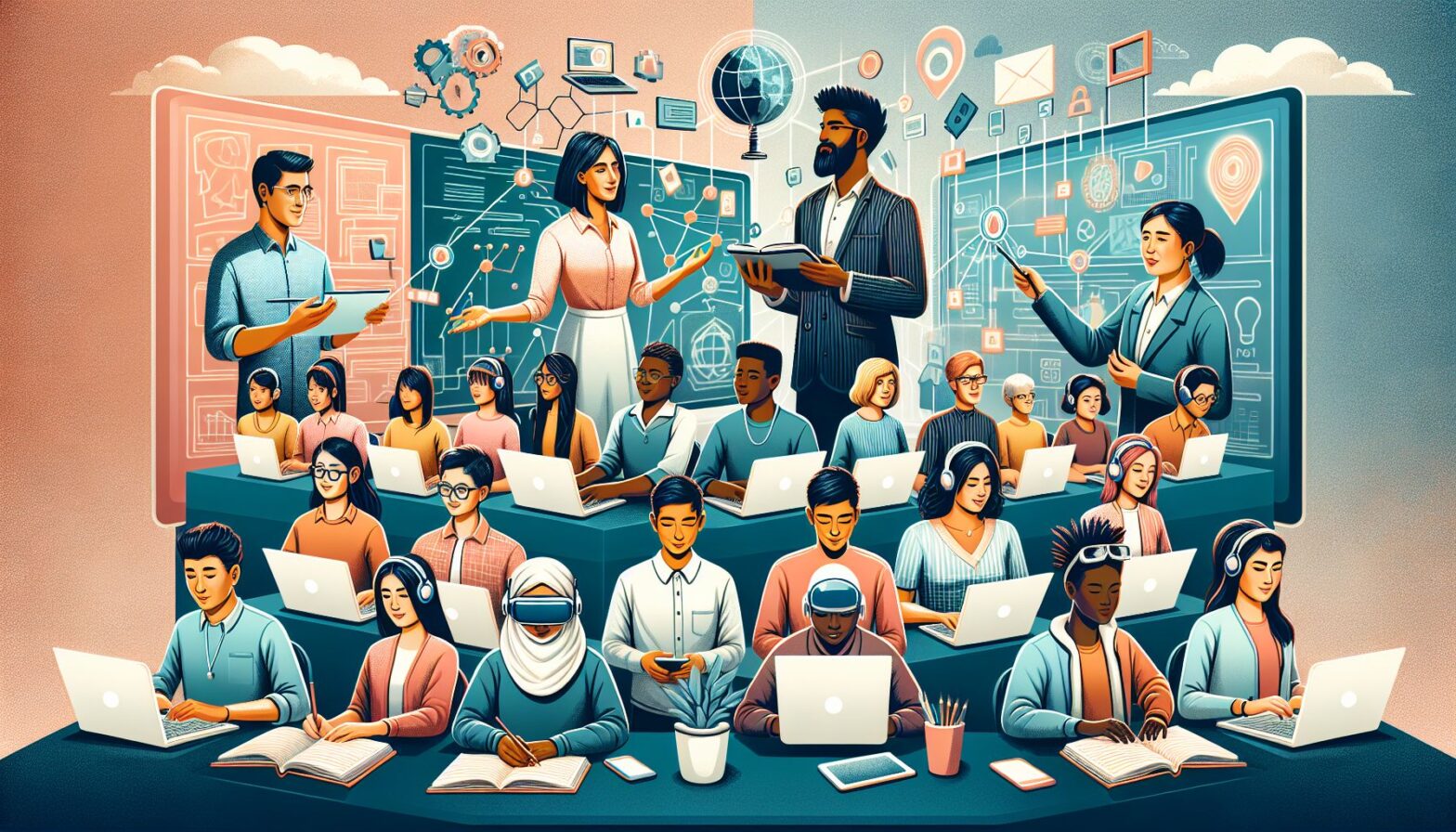In our increasingly digital age, educators find themselves at the crossroads of tradition and evolution, facing the enormous challenge of effectively integrating technology into teaching methodologies. Learning is no longer confined to the four walls of a classroom, and education is now at a transformative point of embracing innovations that blur the lines between technology and traditional pedagogy. As we journey through this intertwined landscape, let’s delve beyond the surface level to truly understand the benefits and challenges of adopting ed-tech, and the imaginative possibilities it holds for the future of learning.
The panorama of education is undergoing a seismic shift, compelling academic institutions to reconsider traditional teaching strategies. Emerging as a revolutionary tool within this dynamic environment, educational technology or ed-tech presents a diverse range of innovative theories and educational frameworks.
Among the most captivating frameworks is the SAMR model, developed by Dr. Ruben Puentedura. This model simplifies the technological integration process into four distinct levels: Substitution, Augmentation, Modification, and Redefinition. As educators navigate from Substitution, where technology merely replaces traditional pedagogical tools, to Redefinition, where technology enables new tasks that were previously inconceivable, a plethora of innovative teaching possibilities emerges.
At the heart of this model is a deep-rooted connection with Bloom’s Taxonomy, a traditional tenet of education. Herein lies the brilliance of ed-tech integration – bridging the old and the new, making the learning process more adjustable, and helping students become proficient digital citizens.
Furthermore, the adoption of game-based learning and e-Portfolios allows educators to leverage the motivational aspects of gamification and the reflective nature of portfolios. Classroom technology such as Augmented Reality (AR), Virtual Reality (VR), and Artificial Intelligence (AI), are pushing boundaries, encouraging students to explore, discover, and create in ways unimaginable a few years ago.
However, while we revel in the numerous potential benefits, the pedagogical integration of technology poses its own set of challenges. Systemic issues such as a lack of adequate training for educators, resistance to change, and equity in access need to be addressed progressively. Herein lies the fine balance that each institution must achieve in its unique journey towards seamless ed-tech integration.
As we ruminate upon the future of education, technology is set to continue playing a vanguard role. Augmented human intelligence, metamorphosing learning spaces, personalized learning models are just the initial echoes of a distant thunder. Much like a skilled potter, the creative synergy between a teacher and technology would shape students’ educational experiences, molding them into not just knowledge-acquirers, but curious, critical thinkers.
In conclusion, we are witnessing a groundbreaking fusion of technology and education. As concepts such as collaborative learning, flipped classrooms, and blended learning evolve, it will become even more essential to adapt our teaching methodologies. With a progressive mindset, fearlessness to experiment, and a learner-centered approach, educators can now transform classrooms into dynamic hubs of exploration and discovery. While we tread this rather challenging yet exhilarating path, the future of education seems to hold fascinating prospects, all geared towards nurturing a generation of lifelong learners who thrive in this interconnected digital world.

